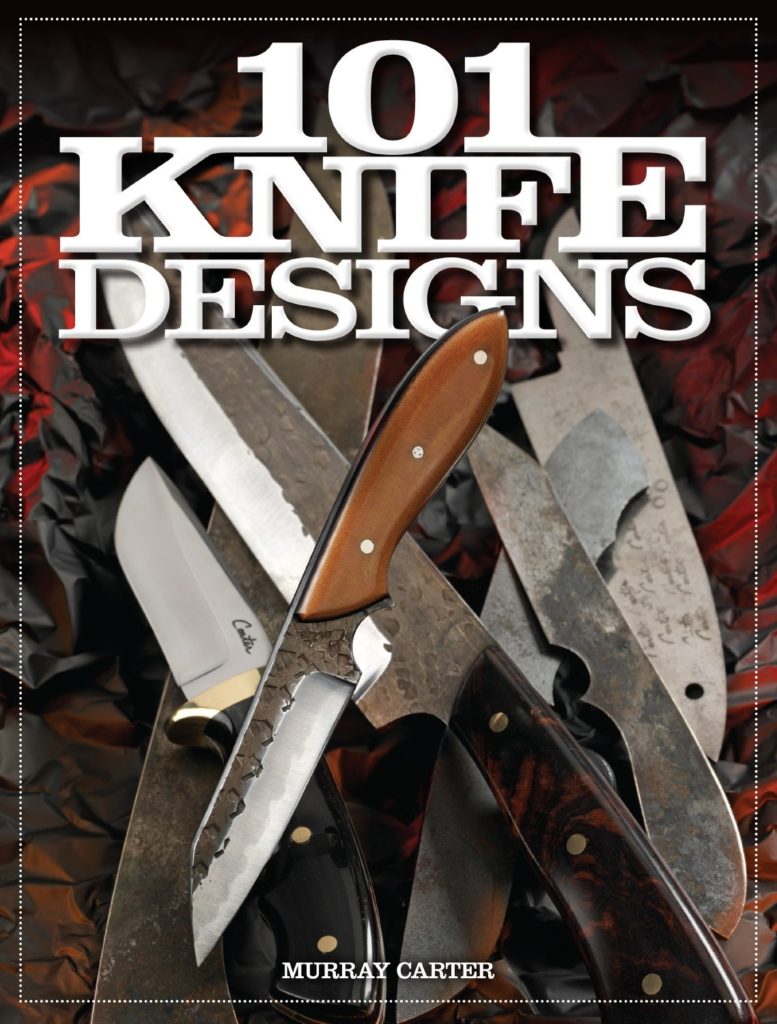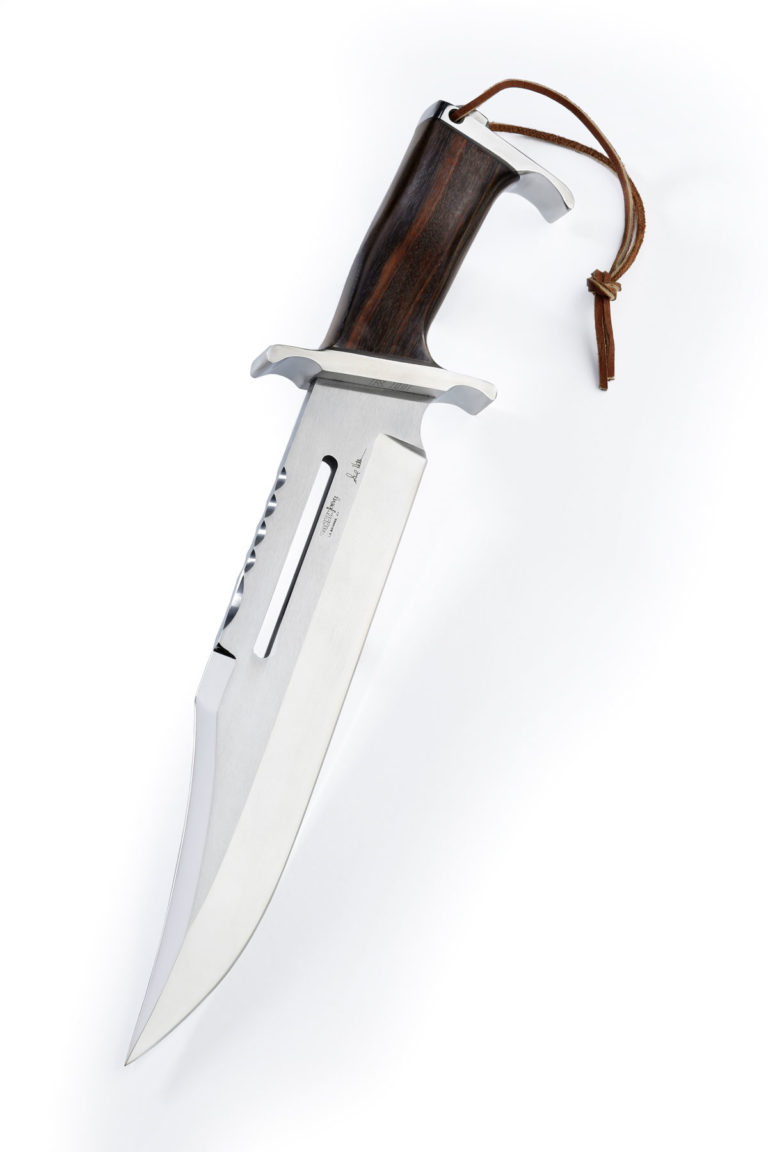

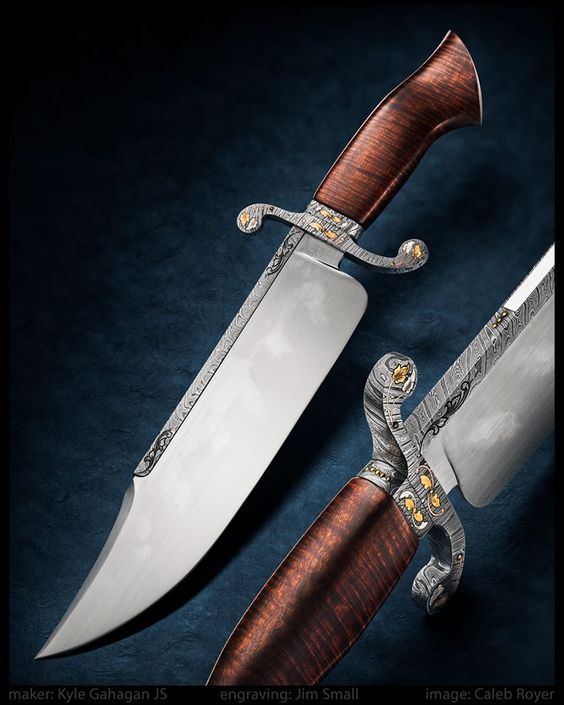
Bowie knives and Rambo knives—and the men who carried them—have more in common than you think.
One (the Bowie knife) is primarily for combat, while the other (the Rambo knife) a survival knife. One was carried by a real person, the other by a fictional character. Both sparked explosive marketing in their respective heydays and were often emulated. Both were carried by men who were larger than life. Perhaps most telling, they continue to spark in-depth conversation long after their debuts.
The Rambo Knife: Built for Survival, then Combat
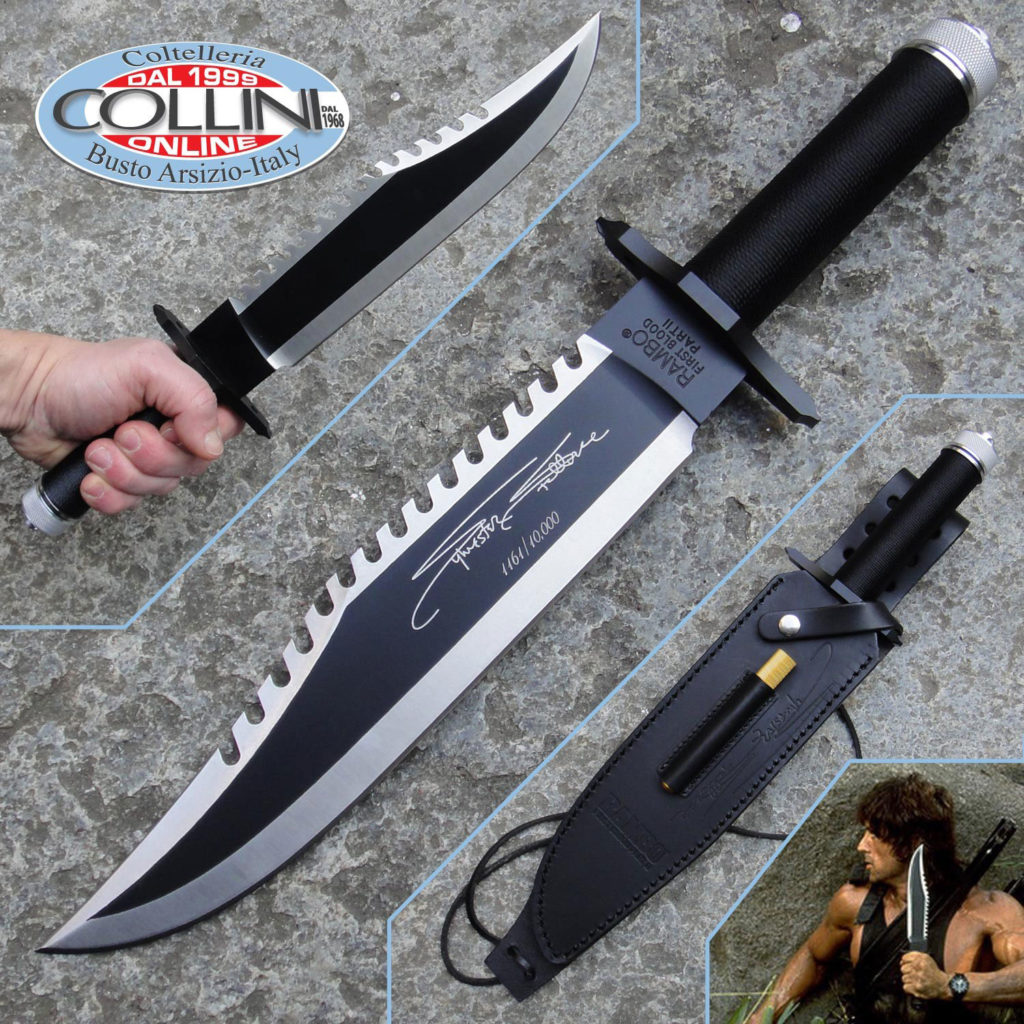
When we say “Rambo knife,” we first think of the Jimmy Lile-designed survival knives that were used in First Blood (1982) and Rambo: First Blood Part II (1985). But there were four movies in the series, and in Rambo III (1988) John Rambo actually carried a bowie designed by Gil Hibben. In Rambo (2008), the fourth and final movie, a chopper-machete made by Hibben was Rambo’s blade of choice.

Survival authority, knife and tool designer, and writer Abe Elias mentioned that in the first movie we actually see Rambo open up the hollow-handled knife and use the items inside. He sews up his own wounds with the fishing line and uses the knife to make traps and kill a boar. He has a compass on the inner side of the butt cap, and can break glass with the outer side. The sawteeth on the spine can be used in woodcraft. The ends of the crossguard are Phillips and flat-head screwdrivers.
The entire concept was based on a pilot survival knife for Air Force pilots and Army helicopter pilots, the intent being that if they were shot down, they would have what they needed to survive in one tool. The sawtooth spines, for example, were for cutting through the acrylic canopies on the downed aircraft.
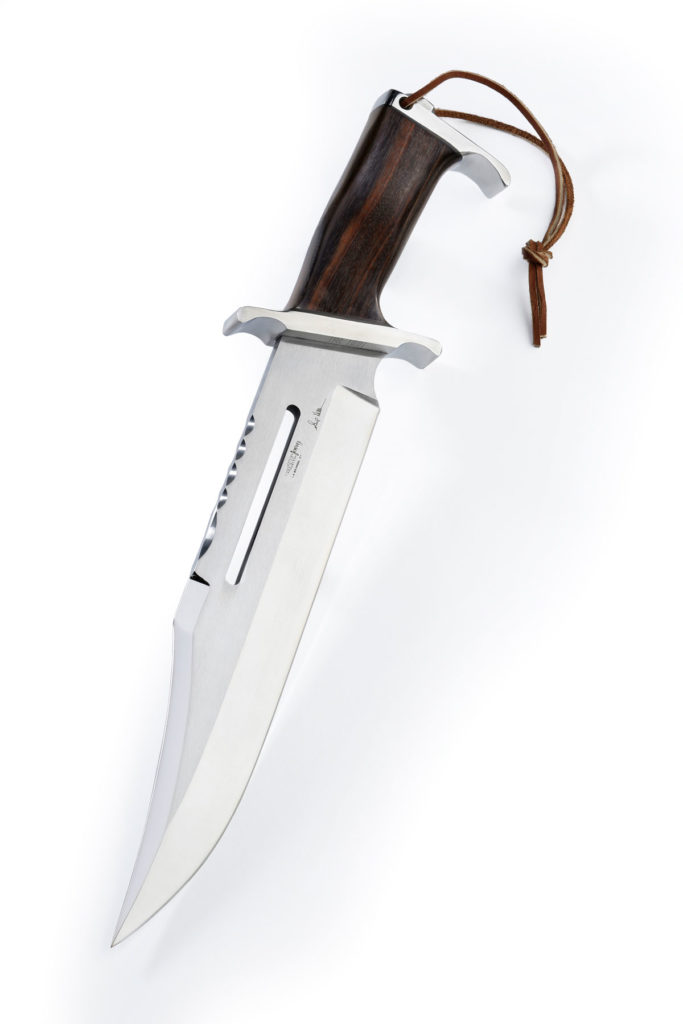

By Rambo III, Gil Hibben had designed an actual bowie for Sylvester Stallone to use in his penultimate appearance as John Rambo. In actuality, the pilot survival knife is said to be based on the Bowie, so there always was a strong connection between the knives. The Hibben version has a 3¾-inch cutout running parallel to the spine, which mainly serves to lighten the 11 7/8-inch blade. Rambo loses the knife but keeps the sheath that he’ll later convert to fit his machete in Rambo, the final in the series.
Elias reminds us that Rambo didn’t kill with the knife in First Blood. He did some serious damage, but not with the knife.
After First Blood, the other three movies seem more caricatures, building a legacy around a fictional character who already was larger than life, symbolized by the knives getting less survival-centric and increasingly combat focused.
Bowie Knife: More Hype than Body Count

Similarly, historians often surmise that James Bowie may have only participated in one knife fight, a duel-turned-melee that left him with multiple gunshot wounds and stabbings.
He is believed thereafter to have worn a large sheathed knife, bolstering his reputation as a fighter and frontiersman. He held a leading role in the Texas Revolution, and stories built him into a folk hero.
Rambo Knife: Marketing Drove Design Changes
Hollow-handled survival knives were already in existence prior to Jimmy Lile’s Rambo knife, but it wasn’t until First Blood that their popularity took off.
Elias remembers the mid-to-late `80s as a time when the survival industry as we know it was just coming into its own, but it still wasn’t commercialized. There were military surplus stores, but there weren’t countless companies selling survival foods and gear. There were very few items that had been capitalized on as “survival” and specialized for that intent. Knives were one of those items, and so the Rambo knife was a hit with both adults and kids.
But then a funny thing happened. Manufacturers began producing hefty bushcraft knives that could stand up to any type of abuse, but often couldn’t cut. So, it became necessary for a survival knife to be “indestructible.”
Well, if you repeatedly baton a hollow-handled knife into a 16-inch log of seasoned hardwood, it won’t hold up. But that was never the intent, and Elias reiterated that it’s rare that you’d baton logs of seasoned wood in a survival situation. It’s far more likely that you’d be making feather sticks, cutting twigs off bigger downed branches and otherwise working with smaller wood for deadfall traps, spears for fishing and roasting small game, and the like.
Bowie Knife: Marketing Drove Manufacturing
The history of the Bowie design is murky, but by the 1830s a longer, thinner Bowie with a longer false edge but less pronounced clip was being shipped from Sheffield, England. They were often etched or stamped with slogans such as “Americans Never Surrender.” The English were able to hide the originating location of the knives by operating works named after American cities, and thus stamping their blades with NY or other U.S. designations.
For the Bowie, it was the increased reliability of larger-caliber revolvers that killed the craze. Knife fights became a less likely proposition.
Larger than Life
If the knives aren’t fantasy enough, the stories around them fill in any gaps.
For instance, in Rambo III, Rambo partners with the mujahideen to defeat the Russian Army in Afghanistan in order to free his captured commander.
Meanwhile, we have stories of James Bowie wiping out Indian raiding parties during an expedition to find the San Saba silver mine, joining the Texas militia, and furthering his fighting prowess in at least two battles of the Texas Revolution.
Legends Die Hard
The most enduring story of James Bowie’s demise is that he fell ill at the Alamo and could no longer lead his volunteers. He is said to have died in his bed after unloading his pistols into the advancing Mexicans.
The cinematic John Rambo lives on. The literary Rambo—well, you’ll just have to immerse yourself in the book to find out.
Keep Learning About Knife Designs
The history of knife design is the history of the knives themselves. Learn more about enduring knife designs in 101 Knife Designs, by renowned knifemaker Murray Carter. It’s available here at ShopBlade.com.
 NEXT STEP: Download Your Free KNIFE GUIDE Issue of BLADE Magazine
NEXT STEP: Download Your Free KNIFE GUIDE Issue of BLADE Magazine
BLADE’s annual Knife Guide Issue features the newest knives and sharpeners, plus knife and axe reviews, knife sheaths, kit knives and a Knife Industry Directory.Get your FREE digital PDF instant download of the annual Knife Guide. No, really! We will email it to you right now when you subscribe to the BLADE email newsletter.


